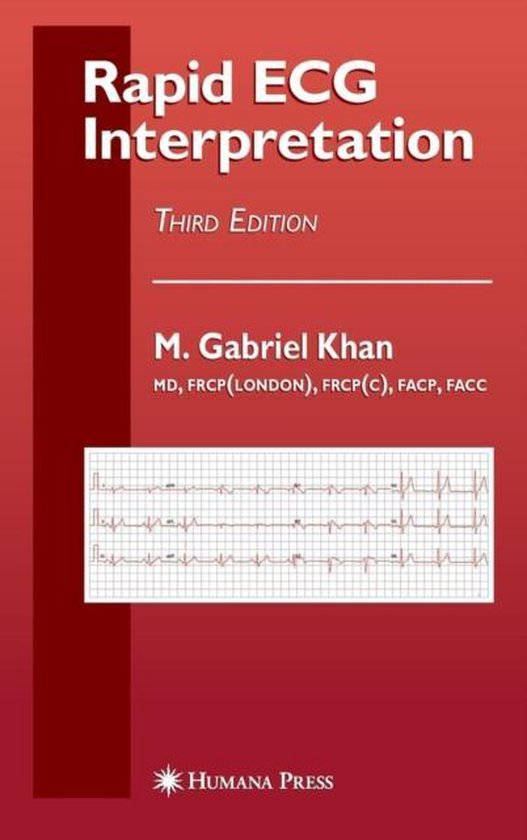
Rapid ECG Interpretation
The ECG is the oldest cardiologic test, but even 100 years after its inception, it continues as the most commonly used cardiologic test. Despite the advent of expensive and sophisticated alternatives, the ECG remains the most reliable tool for the conÞrmation of acute myocardial infarction (MI). The ECG -- not the CK-MB, troponins, echocardiogram, or SPECT or PET scan -- dictates the timely administration of lifesaving PCI or thrombolytic therapy. There is no test to rival the ECG in the diagnosis of arrhythmias, which is a common and bothersome clinical cardiologic problem. In this new third edition, Rapid ECG Interpretation presents a systematic step-by-step approach that provides protocols consistent with changes in cardiology practice over the past decade. All diagnostic ECG criteria are given with relevant and instructive ECGs, providing a quick review or refresher for proficiency tests and for physicians preparing for the ECG section of the Cardiovascular Diseases Board Examination. Among the additions to this new edition is a new chapter, ECG Board Assessment Quiz, whichh provides 81 selected ECG tracings which should sharpen the skills of all who which to Interpret ECGs.
Authoratative and timely, Rapid ECG Interpretation, Third Edition, is an essestial reference for cardiologists, cardiology fellows, internists, residents in internal medicine, family practicioners, and residents in family practice.
The electrocardiogram (ECG) is the ? rst test performed on most cardiac patients–one that helps make the ? rst part of the diagnosis and one that can frequently direct treatment decisions. Thus, for any phy- cian, a solid understanding of the ECG is critical. Learning the basics and subtleties of the ECG is a right of passage for all physicians and healthcare providers during their training. So, what would we want from a book on ECGs? Ideally, such a book would be comprehensive, yet concise, practically oriented, and explain pathophysiology and its application to practice. Dr. Khan has written such a book. Rapid ECG Interpretation is comprehensive, yet concise, and very practically oriented. More imp- tant, it takes a step-by-step approach, walking the reader through a thorough evaluation of the ECG. This, as many of us have been taught, is the “right” way to look at an ECG. This edition includes a new opening chapter that covers basic concepts. This quickly orients the reader to the physiology, anatomy, and geometry of the electrical system of the heart. After reviewing each component of the ECG, the next section describes the unique ECG patterns of speci? c cardiac conditions, including pulmonary embolism and long QT syndrome. This is f- lowed by a chapter with each of the arrhythmias. Finally, Dr. Khan includes an invaluable section—an ECG Board Review and Self- Assessment Quiz. With this, the reader can really see if the basic c- cepts and ECG fundamentals have been learned.
| Auteur | | M. Gabriel Khan |
| Taal | | Engels |
| Type | | Hardcover |
| Categorie | | Geneeskunde & Verpleging |